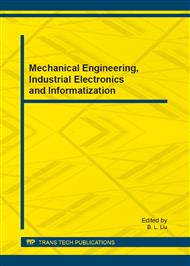p.172
p.176
p.183
p.187
p.191
p.195
p.199
p.203
p.207
A Surface-Enhanced Resonance Raman Scattering Method for the Determination of Trace Crystal Violet on Colloidal Au Nanoparticle Substrate
Abstract:
Colloidal Au nanoparticles as active substrate for surface-enhanced resonance Raman scattering(SERRS) were prepared by the trisodium citrate-reduced procedure. In pH 6.6 Na2HPO4-NaH2PO4 buffer solution and in the presence of aggregation reagent NaCl, nanogolds were aggregated to form stable aggregated- nanogolds (ANG). The crystal violet (CV) adsorbed on the surface of ANG to form CV-ANG conjugates that produce strongest surface-enhanced resonance Raman scattering peak at 1616 cm-1. In the optimal condition, the SERRS intensity at 1616 cm-1 was linear to the CV concentration in the range of 2.5×10-8 -1.75×10-7 mol/L, a surface-enhanced resonance Raman scattering assay was set up for detection of trace CV, with good selectivity.
Info:
Periodical:
Pages:
191-194
Citation:
Online since:
February 2013
Authors:
Price:
Сopyright:
© 2013 Trans Tech Publications Ltd. All Rights Reserved
Share:
Citation:


